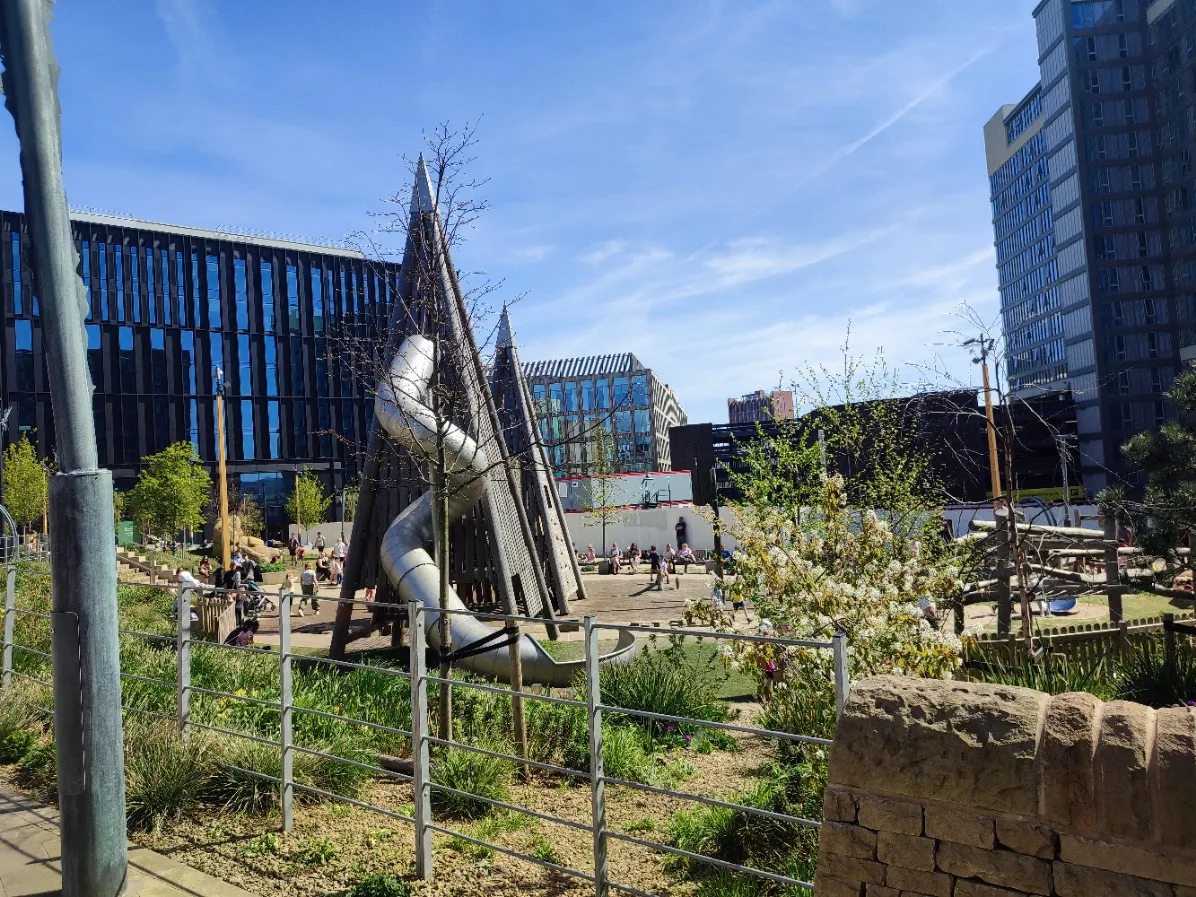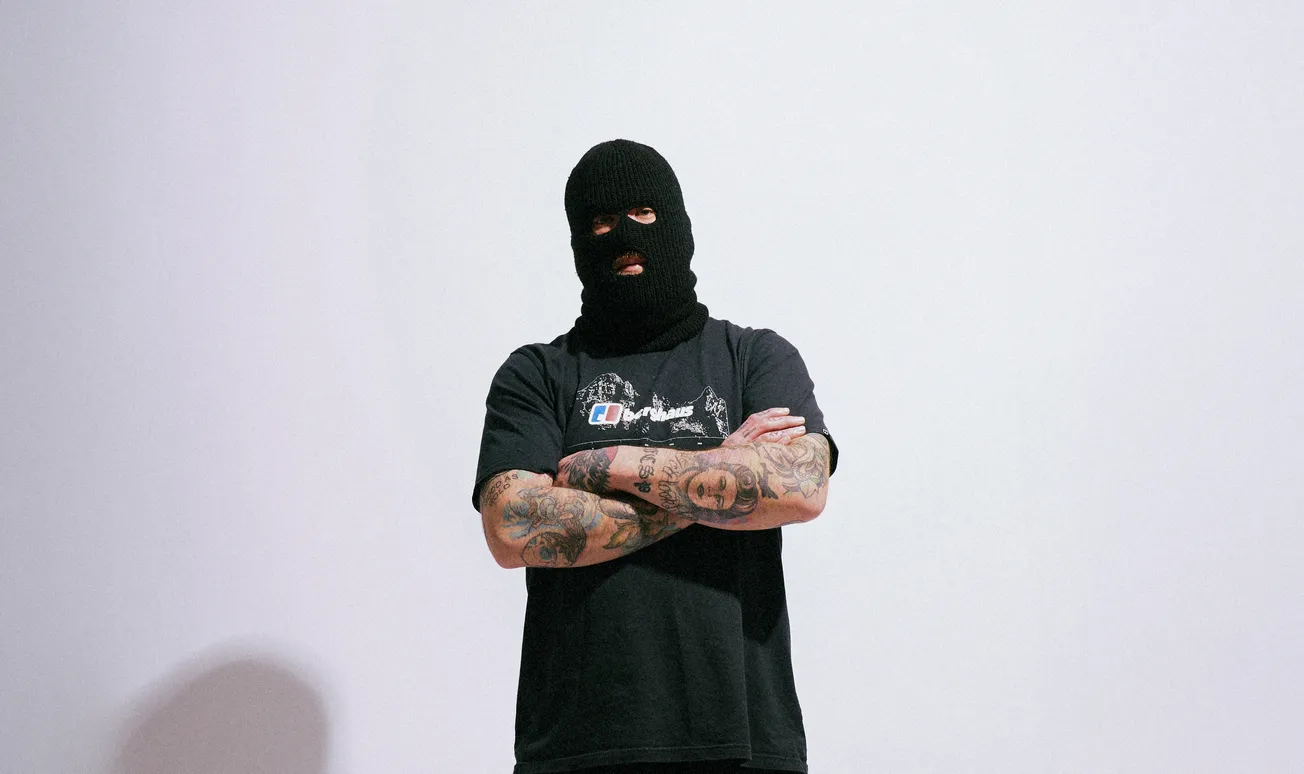Only a few minutes walk down the road from the Yorkshire Natural History Museum in Hillsborough — an institution founded two years ago by a then 23-year-old — lies the alleged unmarked grave of Genghis the camel. As far as the zoo that donated his body to said museum last year was concerned, Genghis was destined to become one of the exhibits. But, like a number of projects dreamed up by the museum’s founder James Hogg, this had yet to come to pass by the time all but one of his staff resigned earlier this year. Even at the time of writing, if you were to hop over a low and crumbling wall and fight through the overgrown plants outside an empty industrial unit, you could still lay flowers by the large plastic compost bin where Genghis’ hacked-off head was reportedly laid to rest.
It wasn’t supposed to be like this — a statement many people might apply to the museum as a whole these days. Hogg’s original idea, I’m told, was to acquire a whale that had beached at Cleethorpes earlier that month for his collection, a plan scuppered when the British Divers Marine Life charity washed it back into the North Sea. Undeterred in his newfound desire to display the skeleton of a modern animal alongside his prehistoric fossils, Hogg decided Genghis was an acceptable alternative, reportedly assuring his staff he would be buried on a relative’s land until natural decomposition had stripped him to the bone. Except it emerged, after the three-day-dead camel’s transport from Oxfordshire to Sheffield had already been arranged, that said relative was not keen.
“At every stage,” a former employee claims, “everyone was saying this was a bad idea.” They tell me it took two days for Genghis to be amateurishly hacked apart, with whatever tools were available. While they are unwilling to incriminate anyone who took part in this grisly task, Hogg certainly wasn’t one of them; he reportedly fled the scene as soon as the tarp covering Genghis was removed, due to his phobia of dead animals. Once the severed head was planted in the compost bin to decompose and the rest of the corpse was sent away to be professionally incinerated, the former employee suspects “it was just forgotten about, out of his mind and he didn’t care any more”. As far as they’re aware, it’s still there to this day.
According to multiple members of Hogg’s former staff, interns and volunteers — most of whom spoke to The Tribune anonymously for fear of reprisals from his notoriously litigious family — this bizarre incident fits a general pattern in his behaviour. He had diverse and far-reaching goals, they claim, but was too easily distracted to follow them through to the end. They might be in the middle of a task, when Hogg would instruct them to drop everything and focus on something else. Before they’d had a chance to complete that, he’d order them to change tack once more. “It became a joke among staff, wondering what the next ‘top priority’ was going to be,” a former employee tells me. “Nothing would get done.”
Sounds frustrating, you might be thinking, but hardly unforgivable. Except the tasks left uncompleted or seriously delayed include jobs even more serious than the proper disposal of a dead camel. According to multiple accounts and evidence seen by The Tribune, they include: paying his staff on time; fixing conditions that threatened the museum’s fossil collection; and, most seriously, turning the museum into the charity it still publicly claims to be.

“I’d have to confirm,” Hogg says hesitantly, when I ask about the current whereabouts of Genghis’ head, during a chat at the Yorkshire Natural History Museum building that lasts over an hour. He doesn’t dispute the account I received, although he insists he gave instructions that everything should be removed from the industrial unit once the lease ended, presumably including Genghis, and “had it confirmed” that this was done. In a written response to The Tribune’s questions, he added that the museum is “no longer accepting life science specimens unless they have been professionally skeletonised first”. (The same zoo later donated a tiger called Khan — “no relation,” one former employee jokes — which Hogg claims is currently being prepared by a professional.)
This is my second lengthy interview with James Hogg, although the tone is very different to the first — not least because he begins by sliding a Non-Disclosure Agreement across the table (I refuse to sign). We’re here once more because, a month and a half ago, The Tribune published my glowing profile of him and his museum, uncritically repeating his claim that it was funded by loans from friends and the proceeds of his fossil preparation company Neo Jurassica, which is based in the museum building. Once the article was out, a number of people familiar with the situation came forward alleging I’d been taken for a ride.
In my defence, I’m not alone in being charmed at first. If I was hungry for a positive story then, at the time Hogg was first founding his museum, the palaeontological community was ravenous. “At a time when museums are losing curatorial staff and mothballing their collections,” a palaeontologist who initially supported the museum tells me, “this was like a ray of sunlight.” Despite Hogg’s youth and lack of museum experience, or even relevant scientific qualifications, some former staff left other jobs to work for him, while one moved to Sheffield from Namibia. “I can’t stress enough how scant paleo jobs are,” another former employee tells me, by way of explanation for their collective credulity. “The jobs we applied for would be dream roles, if we weren’t working for James Hogg.”
Hogg could be convincing and seemed willing to listen to advice, at least at first, plus he had his family’s wealth to bolster his ambitions. “For the first few months, I did believe it had the potential to be a cutting-edge research facility,” a former volunteer from last year tells me. “But then the unprofessionalism became more and more obvious and it didn’t seem like it was going anywhere at all.” Multiple people allege Hogg was almost always late — he was certainly late to his first interview with me — and indifferent to the serious issues that staff, and others, repeatedly attempted to raise with him.
Take the pay. The Tribune has heard from multiple former employees — and seen evidence — that, for months, they received their full wages days or even weeks late, sometimes being paid in dribs and drabs. “He didn’t seem to have any emotional reaction to us raising it,” one claims, “he wouldn’t be dismissive, he just wouldn’t react.” For a while, Hogg was allegedly able to convince his staff that things were going to get better. “He’s very good at telling you things you want to hear,” one says, “And so you let it slip another time.”
But, by February of this year, they could not let it slip any longer. Towards the end of the month, four of Neo Jurassica’s seven staff issued an ultimatum: unless he sent them enough to cover their essential expenses, they were not coming into work. Eventually, he did send them a small sum, enough to convince them to end their informal strike the following day, but when they found themselves in the same position a month later, it was finally too much. By the end of March, all but one of Hogg’s employees — Neo Jurassica’s part-time accountant — had quit.

Hogg concedes that wages were paid late, although he insists these delays were agreed at the time with staff. However, given multiple staff allege the money to pay them was simply not in the bank, it’s unclear what alternative they had (other than quitting, as they eventually did). For a period of time, Hogg tells me, the museum and Neo Jurassica were operating “on a breadline budget,” which he claims was due to “a lack of revenue generation, after payments on equipment”. He adds that he sold off “a lot of personal items” to raise the funds to pay wages.
Very noble of him, but hardly a long-term solution to the problem, I point out. He admits he was advised to cut costs by downsizing — specifically by letting go of members of staff who were, while productive, “not highly revenue generative” — but says he was determined to find another way forward. “They wanted to continue as a team,” he says of his workforce, “I failed to have it in my heart to let staff go.” Though he repeatedly hints that there is more to the story than his staff quitting over pay, he refuses to divulge anything further on the record, since he doesn’t want to cause problems for individual former employees. “I don’t mind taking the blame myself,” he insists. “So, wherever possible, I will.”
That has not always been his policy, judging from screenshots seen by The Tribune. Shortly after the mass exodus of staff, in the comments of a since-deleted Facebook post advertising one of their recently-vacated roles, Hogg insisted any issues with payment were down to “late processing of funds” by his accountant and quickly resolved. “It is a shame this rumour keeps getting circulated,” he writes, “but understandable that it does.”
April Howden, a 27-year-old who volunteered at the museum from January last year until just after staff left, tells me she felt compelled to speak up. “Blaming your accountant for your financial shortcomings… is absolutely diabolical, James,” she commented at the time. When Hogg reached out to her personally, again insisting the issues “did stem from the previous accountant,” she responded that she had witnessed his financial issues “firsthand even as a volunteer” and that he had “lost an amazing team of staff because of this,” messages to which she received no response. She tells me on the phone that she feels all the goodwill the museum has accumulated in Sheffield over the past two years is down to the efforts of Hogg’s former staff. “They were the good part of it, they did all the hard work.”

According to those familiar with the museum, Hogg was similarly blasé about his collection of prehistoric fossils. For months, a significant portion of his collection was stored in the industrial unit down the road where Genghis was butchered — nicknamed “Site B,” an allusion to the Jurassic Park franchise. The building, which also housed Neo Jurassica’s CT scanner and 3D-printing equipment, had a roof that multiple people allege leaked regularly, while the temperature and humidity inside varied wildly. Despite this, many of the fossils were reportedly stored in cardboard boxes without lids.
“You couldn’t really think of worse conditions to store fossils in,” a former employee tells me, “especially not Yorkshire fossils, which are often preserved in pyrite.” Iron pyrite — also known as fool’s gold — breaks down when exposed to water into iron oxide and sulfuric acid, which can destroy the fossil encased in it. In Site B, they allege, the humidity was sometimes so high that “the fossils were basically in a cloud”.
I’m told Hogg did take some measures to improve conditions, but it’s alleged he wasn’t nearly as proactive as he could have been. For example, multiple people claim Hogg’s family gifted him shelves to install in Site B, after staff complained that the boxes of fossils were sitting directly on the concrete floor, but that he got rid of them because they weren’t blue, the colour he had in mind. Some suggested he is more interested in growing his collection and making it look aesthetically pleasing than in preserving it. “These are fossils I know he paid quite a lot of money for,” one tells me, “rotting away.”
Hogg admits that Site B “did not have complete climate control” but insists its use was just a temporary measure and that the fossils are now kept in climate-controlled storage, the location of which he will not divulge “for the safety of the collection”. He claims that any “potentially vulnerable” fossils were removed “pretty much immediately,” although he admits some unprepared fossils were stored there for up to a year. Nonetheless, he insists that “open cardboard containers are common in museums” and that he takes the preservation of his collection incredibly seriously. “I am a little bit obsessed when it comes to that side of things,” he says. He rejects the claim that he didn’t use the shelving donated by his family for aesthetic reasons. “They were inadequate to hold the weight of the fossils.”
While I’d been disappointed to hear allegations that the museum was poorly run, it’s only during a chat with a palaeontologist familiar with Neo Jurassica’s two-hour “laboratory experience,” which I had a go at while working on my previous story, that the criticisms start to become faintly horrifying. Said palaeontologist tells me they read in my previous article that I’d tried the experience. Out of interest, they ask, do I remember being given a mask?
I don’t. None of the photos advertising the experience on Neo Jurassica’s website show anyone wearing masks either. Instead, the ammonite fossils that members of the public can pay to have a go excavating — £32 per person, or £120 if you bring three mates — are chipped away at inside cabinets fitted with a dust extraction system. So that should be fine, right?

My source isn’t convinced. “When you prepare fossils, you are releasing trillions of particles of dust into the air, nanometre-sized bits of dust,” they tell me, adding that you particularly want to avoid breathing in crystalline silica. “If enough of that accumulates in your lungs, you get silicosis.” According to a lengthy health and safety section on the website of Zoic Palaeotech, the company that sold Hogg the tools used in the lab experience, “where there is pyrite there is almost certainly respirable silica” — and I remember Hogg pointing out the pyrite all over the fossil I was working on. Zoic Palaeotech’s website states that it is “essential no matter how much dust extraction you have going on” to wear a well-fitted dust mask while using tools like the one I used. “A surgical or cloth mask that we're also familiar with these days just won't cut the mustard.”
Hogg insists “masks are available in the tray at the entrance” for people taking part in the lab experience and that it is entirely safe. “Everything is up to code, everything has been checked and certified.” Health and safety experts visited the lab, he insists, “and said it was fine”.
What infuriates many of those I speak to most, however, is that the Yorkshire Natural History Museum is not, and never has been, what it claims to be: a charity. At the time of writing, the museum describes itself as “a small charity” on its homepage, as do news articles about its opening two years ago, but there is no record of it on the Charity Commission’s register. Dr Paul Davis, geology curator at the Lyme Regis Museum, told The Tribune he was approached to sit on the board of trustees “but never formally became one as the paperwork was not completed,” later withdrawing his offer of involvement. Similarly Richard Butler, a palaeobiology professor at the University of Birmingham, said he was invited to join the board “but the museum never formally became a charity so, to my knowledge, no trustees have ever been appointed”.
According to those familiar with the situation, Hogg did at least begin this process but, like so many projects, it has yet to come to fruition. He hired Farrer & Co in London, the law firm that advises the Royal Family, to write the museum’s constitution but allegedly could not afford to pay their bill when it arrived. (Farrer & Co chose not to comment.) Without a finalised constitution, the museum cannot formally register as a charity.
Privately-owned museums do exist so this wouldn’t matter all that much, if not for the museum’s annual summer internship. “You mean the slave labour programme,” one former employee jokingly responds when I bring it up. This internship, according to a document on the museum’s website, entails six weeks and 150 hours of work. Specifically, unpaid work — as attested to by former interns from both this and last year’s programme — which is only legal if an internship is part of a higher education course, a school placement, purely work shadowing or run by a “charity, voluntary organisation, associated fund raising body or a statutory body”. A former intern from last year’s programme tells me they were told at the time that the museum was becoming a charity and only learned a few months ago that it still hasn’t. “In my opinion, it’s a bit scummy,” they say. “It’s not even about the money, it’s the principle of it.”
According to an anonymous member of The Palaeontological Association (or PalAss as the charity is colloquially known), it’s more than a bit scummy. They say that PalAss’ board has so far decided not to get involved, since Hogg is not a member, but that a post sharing one of the museum’s job adverts on the PalAss Facebook page was deleted after outrage from some members, including them. “I care a great deal about the reputation of PalAss and I didn’t want it pulled through the mud,” they say. While they’re angry on behalf of those who donated money or fossils to Hogg’s museum while it “masqueraded as a charity,” they are most outraged by the use of unpaid labour. “The main concern for everybody,” they add, “is to stop him tricking more interns into working for him for free, because these kids are being duped.”

Hogg maintains that he has done nothing wrong. The Yorkshire Natural History Museum is “an unincorporated charity” at this point in time, which he insists means it is “legally a charity”. It does not owe any outstanding fees to Farrer & Co and, as of May this year, is working with a new solicitor so that it can be registered as an official charity as soon as possible. (“That’s my top priority at the moment,” he adds.) The internship programme is, he argues, not work but a voluntary “training programme for students, training them up in practical skills”. Why then, I ask, does the document on the website note that applicants need to have the right to work in the UK? He claims this was written by a former employee, and thanks me for pointing it out.
Overall, the impression that Hogg is keen to get across is that, though his aims were perhaps a little too lofty, the museum is now on the right path. “I admit I had been overambitious,” he tells me, “some projects did indeed fail.” But he’s learned his lesson and shrunk the scope of his plans. At the time of writing, he appears to have only three members of staff: a curator, a fossil preparator and the aforementioned part-time accountant.
But it’s not clear that this will be enough. Neither Yorkshire Natural History Museum Ltd or Neo Jurassica Ltd have published financial accounts since late 2022 but, at that time, they were in more than £180,000 worth of debt put together. This could be excused as an inevitable part of setting up the museum that year — you have to spend money to make money, as the adage goes — if not for the fact that the staff who left earlier this year say that money was rarely made, and often frivolously spent. “He doesn’t pay himself a salary, which he loves to tell people,” one ex-employee claims, “but instead he just uses company funds.” Multiple people allege he frequently used the company card to order vegan pizzas for himself, apparently the only meal he was seen to eat. Hogg insists the card “was used to cover pizza for staff and volunteers,” but “is not used for direct personal expenses”.
The only thing keeping either organisation afloat, multiple former staff claim, is the generosity of the wider Hogg family. Hogg admits that he is “fortunate to come from an upper-middle class background” but suggests his critics have overestimated his family’s wealth. That said, he acknowledges that his parents allowed him to take a loan out using their house as collateral and, after repeated questions from me and a long pause, admits that “an additional loan was provided which was able to facilitate wages, while revenue picked up”.
Like everyone else, I wanted to believe in the Yorkshire Natural History Museum. The combination of a plucky young collector, ancient fossils and a warehouse in Hillsborough was too good to resist. But much like the iron pyrite covering much of Hogg’s collection, all that glitters is not, necessarily, gold.

Comments
How to comment:
If you are already a member,
click here to sign in
and leave a comment.
If you aren't a member,
sign up here
to be able to leave a comment.
To add your photo, click here to create a profile on Gravatar.







